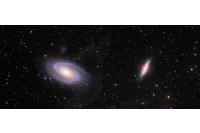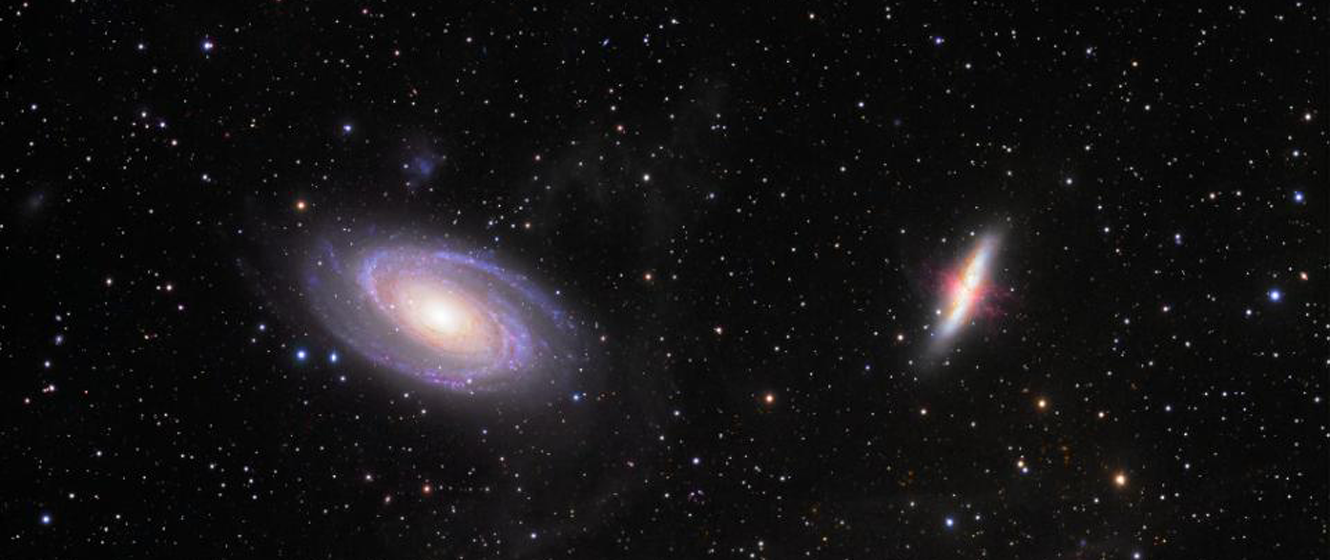
In this episode of What's in the Sky this Month, Teagan reviews some of the beautiful celestial objects you can see in the month of March 2023!
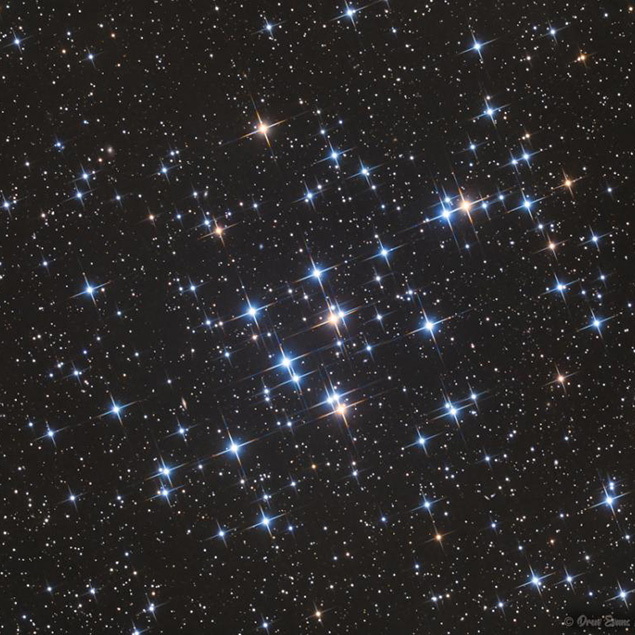
Image credit: Drew Evans
M44 - The Beehive Cluster
- Type: Open Star Cluster
- Constellation: Cancer
- Distance: 610 light-years
- Magnitude: 3.4
- Apparent Diameter: 70’
Located roughly midway between Castor and Pollux in Gemini and Regulus in Leo, this night sky sight can be glimpsed with the naked eye under dark skies and, like the Pleiades, has been known since antiquity. Also like the Pleiades, this is one large cluster that may be best observed through binoculars, rather than a telescope.
Even 8x32 binoculars will show an elongated diamond shape with a close double on the northern tip. Taking a look with 10x50s will nicely enhance the cluster, with a multitude of stars becoming visible across about half the field of view. Telescopically, a low magnification of around 30x will show a large group of young, blue-white stars, with a few older orange stars hiding among them.
OUR NEAREST NEIGHBORS
Neptune is too close to the Sun to be visible this month, while Venus and Jupiter continue to shine in the evening twilight. The pair are just 30 arcseconds apart on the 1, but will then rapidly separate. A thin new Moon appears to the upper left of Jupiter very shortly after sunset on the 22nd, and then close to Venus on the 23rd and 24th. Mercury becomes visible after sunset on the 27th when it appears just to the right of Jupiter, but you’ll need a clear view of the western horizon to see them. Uranus may only be visible for the first ten days of the month, and once the skies are dark, you’ll only have about 30 minutes to an hour before its low altitude will make observation difficult. Mars remains visible throughout the evening, with the nearly first quarter Moon appearing west of the planet on the 27th and to its east the following night. Saturn returns to the predawn sky around mid-month, with the waning crescent Moon to its lower right on the 19th. Lastly, the Moon turns full in Leo on the 7th and then turns new on the 21st.
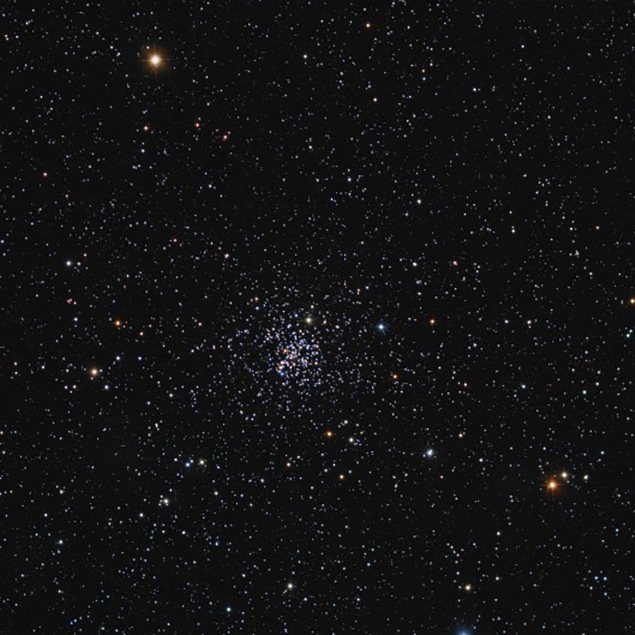
Image credit: Processing - Noel Carboni, Imaging - Greg Parker
Messier 67
M67 shares Cancer with M44, and although fainter than the Beehive, it’s still detectable in regular 10x50 binoculars as a small hazy patch. Telescopically, a low magnification of 35x reveals a tight, compacted cluster of hundreds of faint blue-white stars.
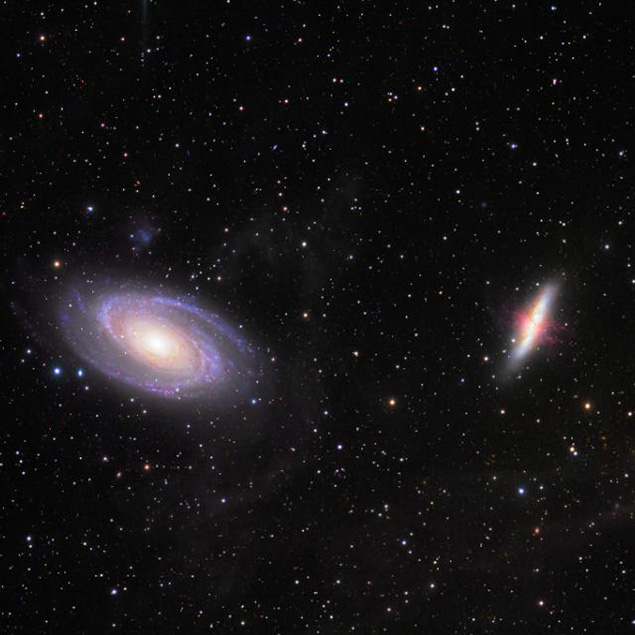
Image credit: Dietmar Hager, Torsten Grossmann
Messier 81 & Messier 82
A favorite among astrophotographers, this close pair of galaxies can fit within the same telescopic field of view at around 40x. Some texture is visible on M82 with a small scope, while the spiral arms of M81 may also be faintly seen with averted vision.
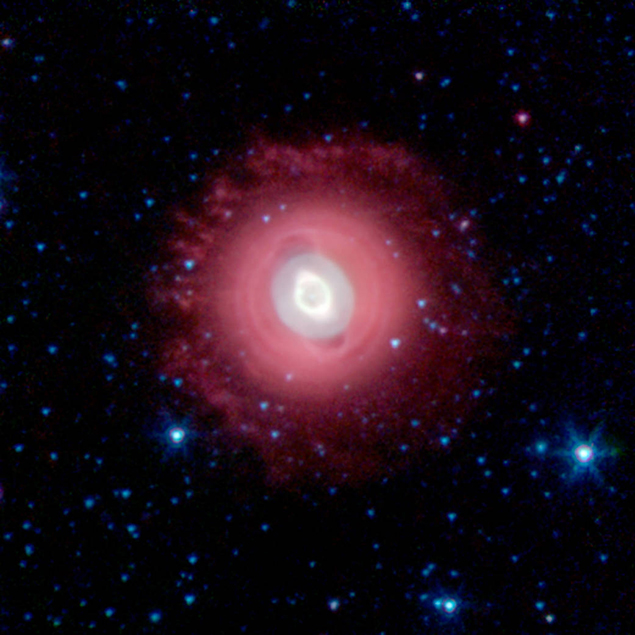
Image credit: NASA/JPL-Caltech/Harvard-Smithsonian CfA
NGC 3242 - The Ghost of Jupiter
NGC 3242, the Ghost of Jupiter, is a planetary nebula so-called thanks to it having the same apparent diameter as Jupiter. A small telescope will show a bright, bluish disc, while mid-sized scopes will show the central star encircled by a ring.
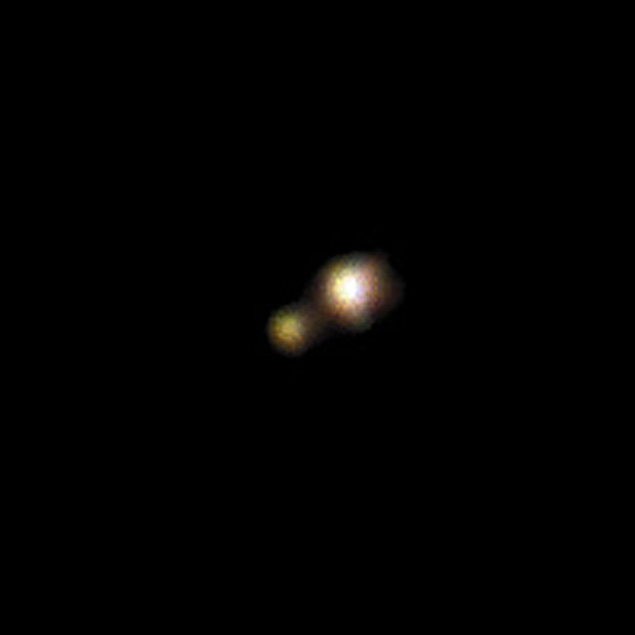
Image credit: Rainer Anton
Gamma Leonis - Algieba
This famous multiple star can be found in the sickle of Leo’s head and shows two stars through almost any binoculars. However, almost any telescope will split the brighter star into two golden components of equal brightness.
STELLAR CONCEPTS
Zodiac: While almost everyone is familiar with the twelve “signs” of the zodiac, from Aries to Pisces, few people are actually aware of their true meaning. The Sun, Moon, and planets all appear to follow a path through the sky called the ecliptic. Since the ecliptic only passes through certain constellations, these constellations became collectively known as the zodiac. However, in reality, the ecliptic passes through 13 constellations, as the path also passes through Ophiuchus, the Serpent Bearer.





